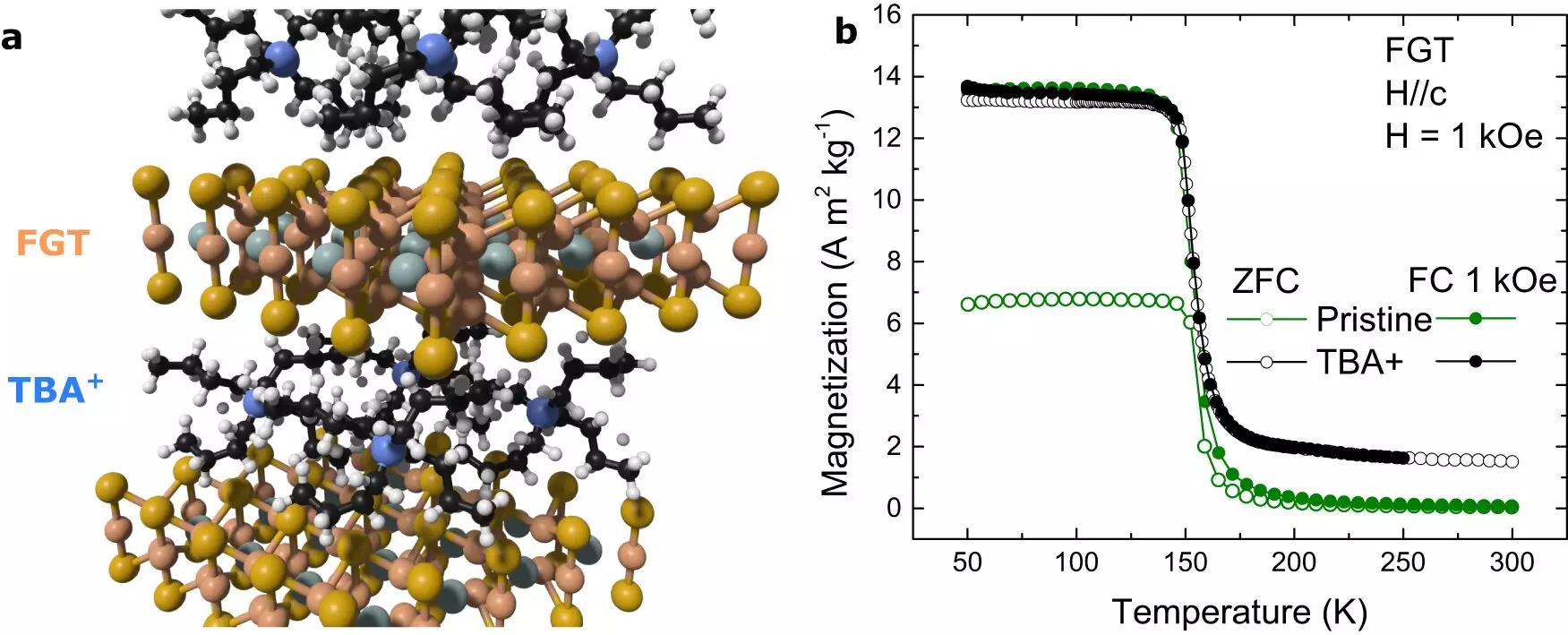With the increasing demand for enhanced data storage and faster-performing computers, researchers are relentlessly striving to develop groundbreaking materials. The ultimate goal is to design materials that can store data more efficiently, at a lower cost, and with reduced power consumption. Driven by this pursuit, Srinivasa Singamaneni, an associate professor in the Department of Physics at The University of Texas at El Paso, and his team have made a remarkable discovery in the realm of magnet technology. Their breakthrough is a new type of magnet with the potential to revolutionize computational power and transform multiple industries.
Singamaneni and his team’s research, as featured in npj 2D Materials and Applications, centers around quantum magnets. These magnets hold immense promise due to their ability to outperform traditional magnets found in everyday objects, such as laptops, speakers, headsets, and MRI scanners. Harnessing the power of quantum magnets in computing could be a game-changer. Singamaneni and his colleagues have been exploring van der Waals magnets, a class of magnets, since 2021. These magnets are only a single layer thick and possess strong potential in the computing world due to their minuscule size.
Overcoming Temperature Constraints
While van der Waals magnets have shown great promise, one significant hurdle has hindered their practical applications: they could only operate at freezing temperatures. Singamaneni’s team, collaborating with scientists from various renowned institutions such as Stanford University, The University of Edinburgh, Los Alamos National Lab, the National Institute of Standards and Technology (NIST), and Brookhaven National Lab, discovered a groundbreaking solution. They found that by incorporating a low-cost organic material called tetrabutylammonium between the atomic layers of the magnet, it became functional at temperatures of up to a scorching 170 degrees Fahrenheit.
The Chemical Boost to Magnetism
Singamaneni highlights the uniqueness of their approach, stating that their chemical treatment of the magnet pushes the boundaries of 2D magnetism, potentially revolutionizing the industry. This breakthrough not only expands the range of applications for van der Waals magnets but also paves the way for transformative advancements in computing technology. The team has successfully demonstrated the magnet’s potential at the laboratory level, laying the foundation for further investigation and refinement.
The Road Ahead
While Singamaneni and his team have made groundbreaking strides, their journey is far from over. Their focus now shifts to in-depth studies and perfecting the material for widespread usage in computing. The team is dedicated to unlocking the full potential of this new class of magnets and propelling the future of computing to unprecedented heights.
The research team is comprised of several renowned scientists, each contributing their expertise to the project. UTEP alumnus Hector Iturriaga, now at Stanford University; UTEP graduate student Luis M. Martinez; and UTEP scientists Sreeprasad Sreenivasan, Ph.D., and Mohamed Sanad, Ph.D. have played instrumental roles. They are joined by experts from NIST, including Thuc Mai, Ph.D., Adam Biacchi, Ph.D., and Angela Hight Walker, Ph.D. Other key contributors to this endeavor include Mathias Augustin, Ph.D., and Elton Santos, Ph.D., from the University of Edinburgh; Yu Liu, Ph.D., from Los Alamos National Lab; and Cedomir Petrovic, Ph.D., from Brookhaven National Lab. Through collaborative efforts, this team of esteemed scientists is driving the exploration of a new frontier in magnet technology.
The discovery of the new class of magnets and their potential to operate at elevated temperatures has opened up a world of possibilities for computing technology. By pushing the boundaries of 2D magnetism, Singamaneni and his team have paved the way for transformative advancements. As they continue to refine and perfect the material, the future of computing may soon be upon us, ushering in an era of unparalleled performance, efficiency, and innovation.



Leave a Reply